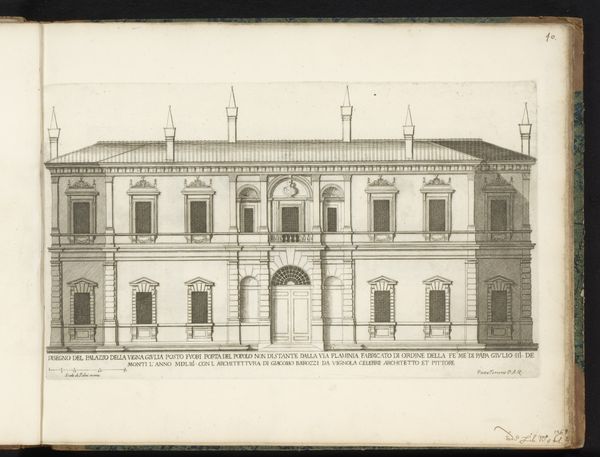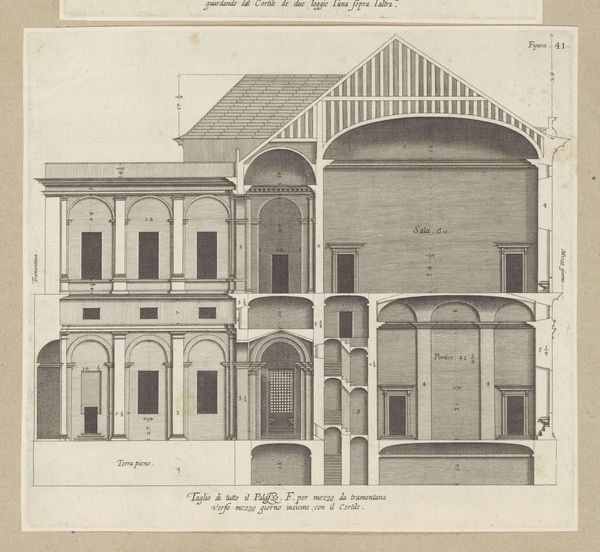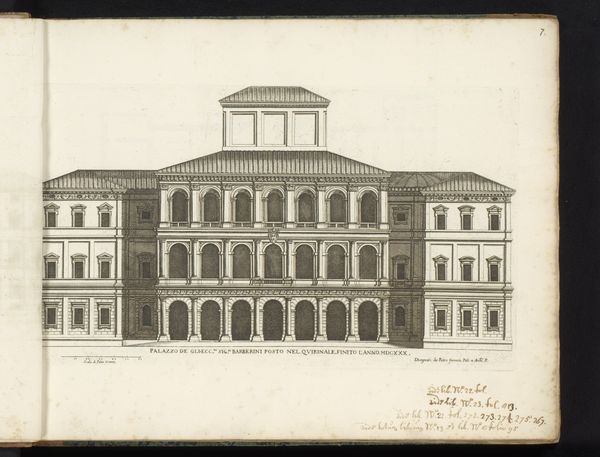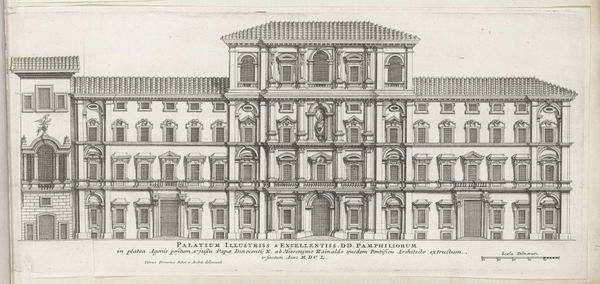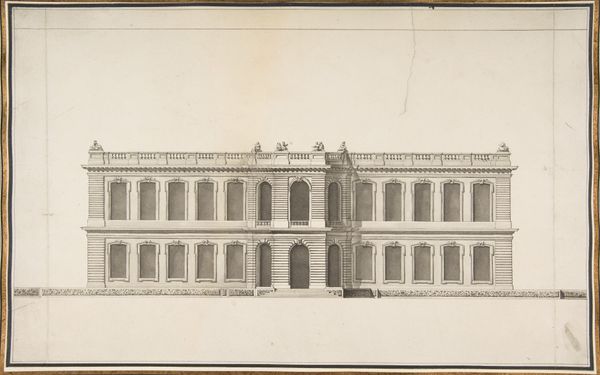
Dimensions: height 232 mm, width 356 mm
Copyright: Rijks Museum: Open Domain
Editor: This is "Façade met rondbogen en balkons," or "Facade with round arches and balconies," made around 1745 by Carl Albert von Lespilliez. It's an etching, part of the Rijksmuseum's collection. There’s something so meticulously ordered about it, almost mathematical in its precision. What jumps out at you? Curator: The unwavering symmetry! Look how every element mirrors itself across that central axis. This echoes Neoclassical ideals: order, reason, and a deliberate harkening back to ancient Roman and Greek architecture. Editor: Yes, the Roman arches above the windows give it away. So, this is architecture as cultural statement? Curator: Precisely! But go deeper. Notice the garlands, the urns, the overall sense of controlled ornamentation. Consider what these motifs signify. What stories do you think they convey about power, taste, and social standing in the mid-18th century? Editor: Hmm, well, the garlands speak of prosperity and celebration. The urns? Maybe remembrance, or the permanence of wealth? It’s like they’re trying to legitimize their power through visual association with the past. Curator: You've grasped a crucial point. The artist meticulously borrowed from the past. The repetition and measured harmony can symbolize their aspirations for an enduring legacy, tying themselves to the grand narrative of Western civilization. How do these symbolic gestures affect the viewer, then and now? Editor: I think I see now. It’s not just a building; it’s a carefully constructed argument for authority, communicated through architectural symbols. Curator: Exactly. Art gives enduring form to power. Now consider the modern eye viewing that same building across history, and a newer symbolism arises that is specific to them. Editor: Fascinating. I'll never look at a building the same way again!
Comments
No comments
Be the first to comment and join the conversation on the ultimate creative platform.
